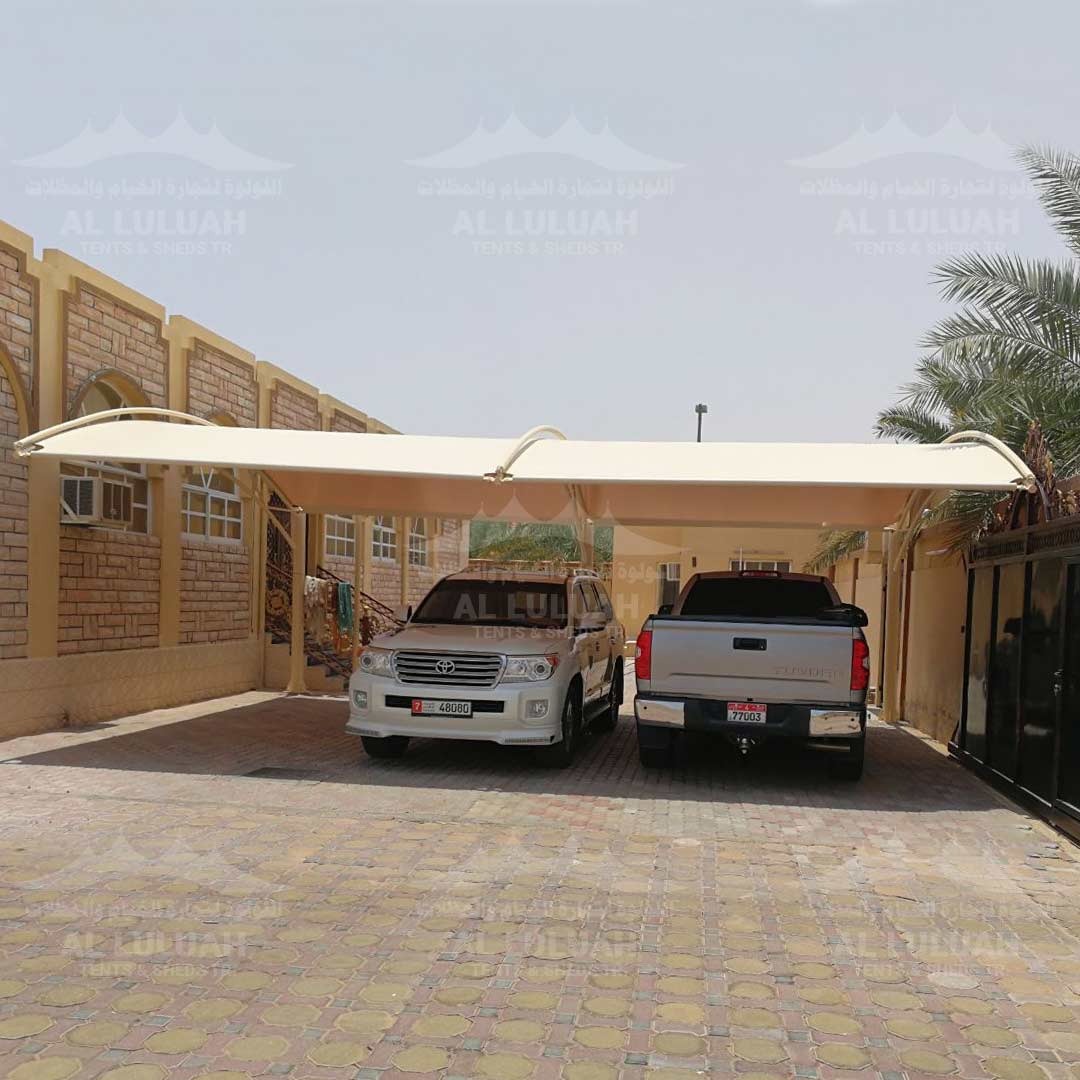 Car Parking Shade in the UAE[/caption]
Car Parking Shade in the UAE[/caption]Car parking shade is the first thing that comes to mind when you think about surviving a UAE summer in your car. Open the door, and the heat hits you like an oven blast. Without protection, interiors bake, seatbelts scald, and dashboards crack. It’s not a luxury it’s a basic need.
A Practical Necessity
You see car parking shades everywhere here. Malls, mosques, villas, hospitals, and offices all rely on these structures to make daily life possible. They shield vehicles from the fierce sun, damaging UV rays, and constant sand.
Without shade, cars become practically unusable for hours. Interiors suffer heat damage, electronics degrade faster, and AC systems strain themselves into early retirement. As a result, investing in shade protects your vehicle and makes getting in the car bearable, even on the hottest days.
Why Car Parking Shades Matters?
Leaving a car in direct sun is asking for trouble. Overheated interiors, burned hands on the wheel, and AC units working overtime— all of it is avoidable with proper car parking shade.
Additionally, there’s an environmental angle. Cars baking in the sun need longer, harder cooling when they start, consuming more fuel or draining EV batteries faster. By adding shade, you reduce energy use a little at a time, but across a city, those savings add up to lower emissions and real environmental benefits.
Types of Parking Shades
There’s no single style of car parking shade that fits every situation. The UAE has developed plenty of options to suit different needs and budgets.
- Cantilever Shades: Supported at the back so the front stays clear, making parking easy. These are popular in residential compounds and shopping centers.
- Pyramid/Umbrella Shades: Stylish, with peaked tops that help with rain runoff. Common in high-end or VIP areas.
- Sail/Tensile Fabric Shades: Modern and sculptural, though they need precise engineering to stay tensioned and sleek.
- Arch/Curved Shades: Smooth, wave-like shapes that manage rain well while looking elegant.
- Flat or Sloped Roof Shades: Simple and cost-effective, widely used in industrial zones and overflow parking.
- Custom Designs: Tailored to special requirements, from color and style to integrated solar panels or resistance to heavy wind loads.
Materials and Technology
A good car parking shade must handle the region’s extreme conditions. Materials matter—a lot.
For fabrics, PVC-coated polyester (typically 550 GSM or higher) is the go-to choice thanks to its waterproof, UV-resistant durability. Meanwhile, HDPE mesh allows more airflow but isn’t fully waterproof.
For premium projects, PTFE or PVDF-coated fabrics can last over 20 years, making them ideal for large-scale or government installations.
As for frames, they’re usually made from galvanized or powder-coated steel to resist corrosion. Aluminum is used in lighter designs. Especially in coastal areas, protective coatings and high-quality fasteners are essential to prevent rust and wear.
The Installation Process
Installing these shades isn’t a quick DIY job. It begins with a site survey to measure space, evaluate soil conditions, and choose the right design.
Next comes design and pricing discussions, followed by necessary approvals to ensure safety compliance.
Frames and fabric are typically fabricated off-site. Meanwhile, on-site work involves pouring reinforced concrete footings, assembling frames, and tensioning the fabric precisely.
Finishing touches can include branding, lighting, and drainage solutions. For example, a villa installation might take 2–4 weeks, while larger projects with multiple bays and stricter approvals will naturally take longer.